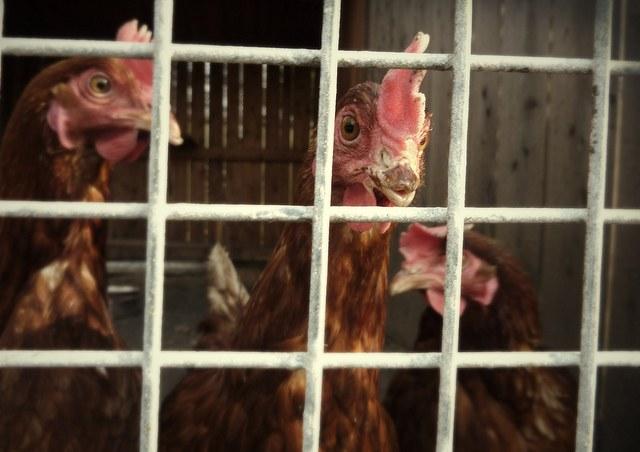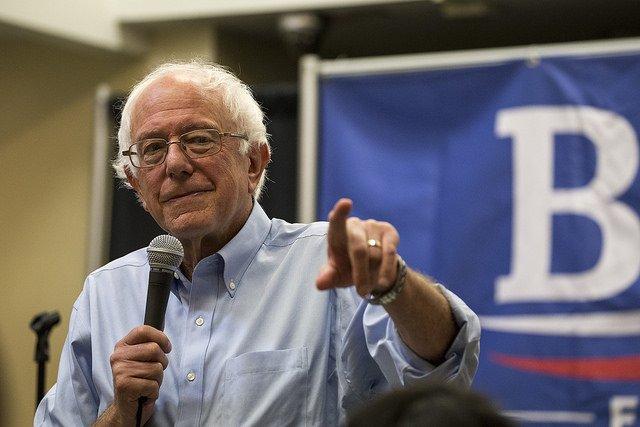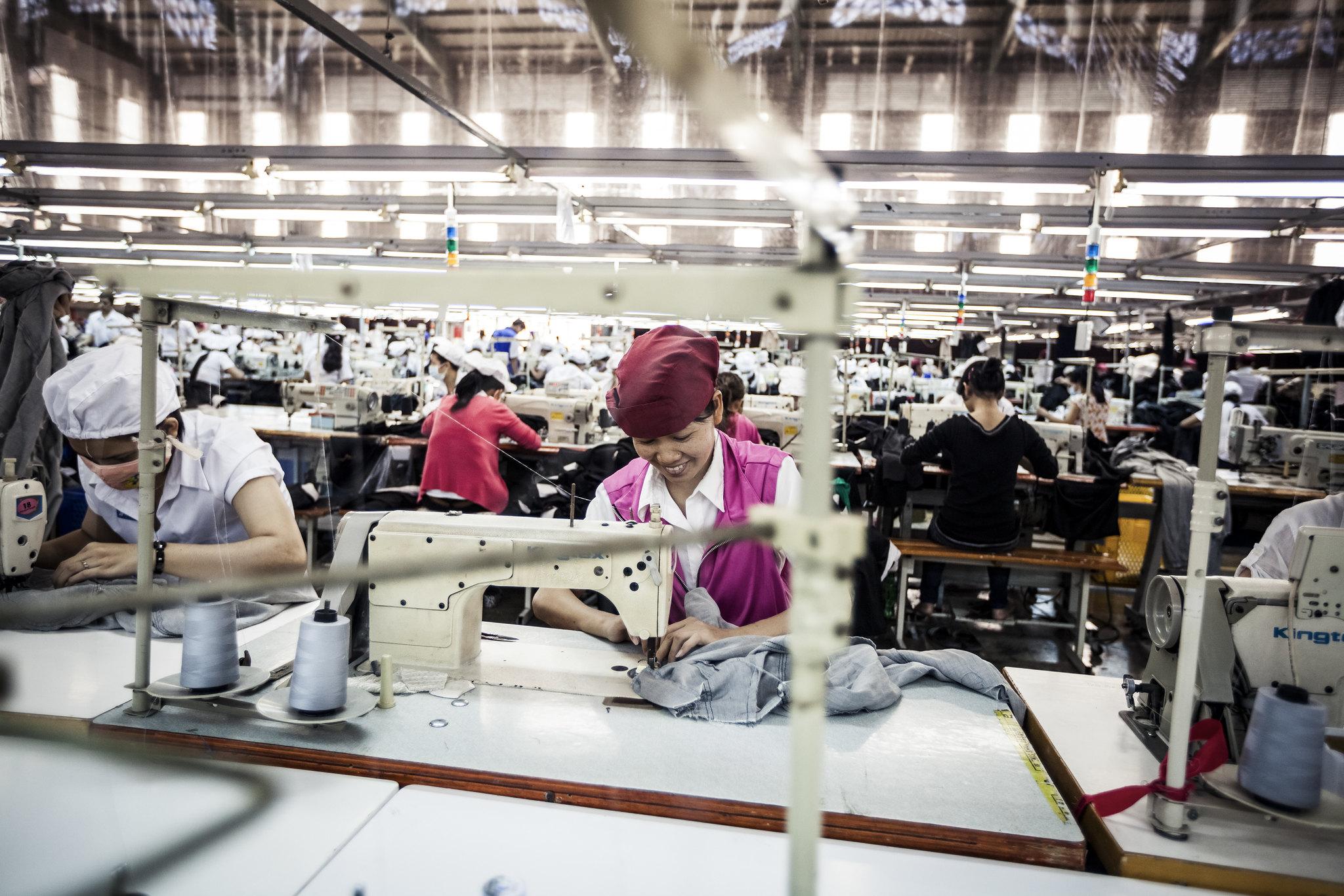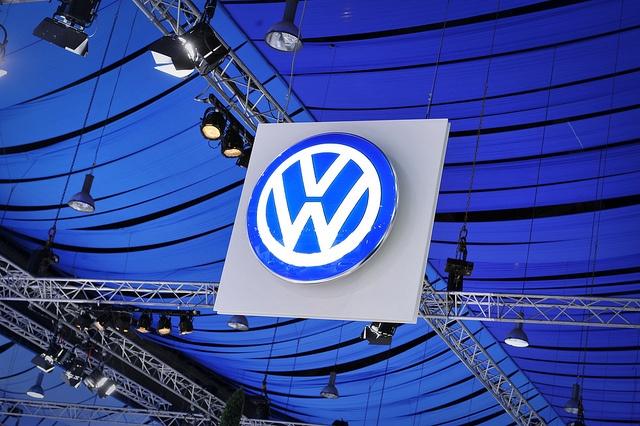Perdue Foods Announces New Animal Welfare Policy


Poultry company Perdue Foods became the target of animal welfare organizations after an undercover investigation by Mercy For Animals (MFA) revealed illegal animal abuse at two of the company’s contract farms. Almost 182,000 people signed a petition urging Perdue to adopt better animal welfare standards.
After negotiations with MFA and other groups, Perdue announced new animal welfare policies this week. And animal welfare organizations are praising the company’s new policies. MFA described it as the “most comprehensive animal welfare policy ever adopted by a major chicken producer.” Perdue is one of only four companies that control most of the chicken industry.
Perdue’s new policies will reduce the suffering of almost 680 million birds on 2,200 farms, according to MFA. The new animal welfare plan is called Commitments to Animal Care 2016 and Beyond, and it is based on the Five Freedoms of Animal Welfare:
- Freedom from hunger and thirst
- Freedom from discomfort
- Freedom from pain, injury or disease
- Freedom to express normal behavior
- Freedom from fear and distress
- Evaluating and implementing production systems that go beyond the needs of the company’s chickens, to include the wants of its chickens.
- Re-committing to its efforts to transform the relationship with the farmers who raise its chickens.
- Being transparent about its programs, goals, and progress.
- Continuing to build an Animal Care Culture within the company.
“As we continue to learn about innovative and better ways to raise animals through our 'No Antibiotics Ever' journey and our experience in raising organic chickens, we are adopting a four-part plan which will result in changing how we raise chickens,” said Chairman Jim Perdue, in a statement. “Our vision is to be the most trusted name in food and agricultural products and animal care is a big part of that journey.”As part of the new animal welfare plan, Perdue will “study and implement new space criteria for chickens based on bird activity and health.” To date, only 12 percent of its chicken housing includes outdoor access and natural light. By the end of this year, Perdue will install windows in 200 existing poultry houses, and use them to compare the health and activity of the chickens with others in enclosed housing. If the windows are found to be effective in increasing bird activity, the company will create annual targets to add windows to existing houses. All new houses will contain windows. Perdue also hopes to double the rate of chicken activity in the next three years.
Perdue will start to better monitor its employees and communicate better with the farmers who raise its chickens. It will start video monitoring its transport vehicles and catching crews, and spot-check the video recordings weekly. It will add more pay incentives for farmers and other people who handle the live chickens to “further promote appropriate handling of live chickens.”
Consumers are driving new animal welfare policies
Consumers are one of the drivers for Perdue's new animal welfare policies. As Perdue stated: “Consumers increasingly consider the origin of their food, the scale of Perdue’s commitments to animal care will further conversations around responsible food production from the farmer to the consumer, and bring progressive raising practices into the mainstream.”Perdue is not the only company to announce new animal welfare policies. Over the past couple of years, a number of companies announced commitments to cage-free eggs and phasing-out sow gestation crates. The reason why is simple: More and more consumers want to buy humanely-raised products. A 2013 survey found that 34 percent of consumers will pay 10 to 20 percent more for humanely-raised and certified products, and 74 percent said they are willing to pay more for humanely-raised meat, dairy and eggs. Almost all (95 percent) said that the most important label to them is humanely-raised.
Image credit: Flickr/Krystian Olszanski
Does Capitalism Have Competition in the United States?


The negative connotation baby boomers once associated with the political theory of socialism has evolved with help from the progressively-thinking millennial generation. Socialism to the older American generation is often linked to one of the most panicked eras in American history with the threat of communism creating waves in eastern Europe. Socialism, in a sense, was considered to be the gateway to communism. But now, with the younger generation who never experienced the stronghold of the Iron Curtain -- and an old man with crazy hair and waving arms by the name of Bernie Sanders preaching equality -- socialism is gaining traction.
The rising popularity of socialism begets the declining nod of approval to capitalism. The younger generation has widely associated the American economy with the plight of the 2007 Great Recession. The lavish young professionals who created wealth with investments on Wall Street in the 1990s are largely an enigma that seems to only exist for millennials in movies and history books.
Wages aren’t increasing at a satisfactory rate, and tuition and health care costs are climbing. High-school students are told college is the route to success but are met with remarkable debt and a small, competitive job market. Rent is steadily rising, particularly in major cities. And while the unemployment rate sits at a meager 4.7 percent, it’s a deceiving stat that includes part-time and gig jobs, Foreign Policy reports. So, what’s the answer to all of these problems? It seems like the youth thinks socialism could provide answers.
An April 2016 poll from Harvard University shows that capitalism is at an all-time low. The poll, which pulled results from adults 18 to 29, found that 51 percent of participants do not support capitalism, while just 42 percent said they like it. A Pew survey four years prior came to a similar conclusion: 47 percent of respondents in the same age group viewed capitalism negatively, with 46 percent noting their approval.
All of this disapproval of capitalism didn’t necessarily translate to the approval of socialism, though. The Harvard and Pew surveys found that 33 percent and 49 percent of the 18- to 29-year-olds supported socialism or viewed it positively. Interestingly, the different age groups involved in the Pew survey showed the greatest disparity in their opinion of socialism. Only 13 percent of those 65 or older viewed it as positive.
The younger, more liberal and progressive generation found solace in a candidate preaching for equality, increased minimum wages, and expanded social security and welfare. They started to “feel the Bern.” But the youth alone couldn’t secure Sanders a bid on the national ticket, with the masses deeming his counterpart, Hillary Clinton, more fit to run the country. But that’s not to say Sanders’ campaign was for naught.
Sanders brought to the table reforms on the educational system to make the dream of going to college not burdensome by the extreme costs. He pushed the conversation on minimum wage increases. But most importantly, perhaps for the progressive and younger generation, he reintroduced and helped popularize socialism.
While capitalism certainly isn’t going anywhere in the United States in the foreseeable future, it may have to take a peek in the rearview mirror if the younger generation’s feelings toward socialism continue to strengthen as economic inequality continues to expand.
Photo by Phil Roeder/Flickr
How APP Sees the Forest Through the Trees


If you want to see just how complicated a supply chain can be, the operations of Asia Pulp and Paper (APP) on Hainan Island, China, gives an idea of what goes into products that we often take for granted. And considering that APP is also an integral supplier to companies around the world, it is easy to see how one wayward employee or lax oversight can land a company in hot water with its stakeholders, particularly environmentalists. In APP’s case, its business on Hainan -- from tree seedlings to the finished product -- offers a case study on what it takes to evolve into a more responsible and sustainable company.
Trees, obviously, are to APP what wheat, soy or palm oil are to other companies. APP’s managed forests in Indonesia combine to cultivate far more raw material for the company than its current holdings in China. But those forests, concentrated in Hainan, offer a sense of the scale APP has developed as the world continues to demand paper.
APP’s most recent tour for journalists started from Haikou, the province’s capital and home to 2 million people. Skyscrapers and condominium high-rises eventually give way to a lush landscape of palm trees and plantations that grow just about everything from bananas to mangoes to rubber. After a 90-minute drive, we arrived at a site where eucalyptus trees soar when compared to the stalks of a papaya farm just a few hundred yards away.
It is here is where the efforts of APP’s massive forestry team come to fruition. Once APP’s tree seedlings (discussed in a previous article) are planted, employees are then tasked with ensuring that these trees can thrive. Many moving parts ensure that these trees can eventually be turned into the pulp that is the foundation of APP’s business.
For example, the 25 hectares (62 acres) of trees within the “compartment area” we visited had a profile — as do all the groupings of trees that APP and its subcontractors manage. In this case, this varietal of eucalyptus, “DH32-26,” was planted here because it was the optimal tree for the soil, which is acidic and also rich in minerals such as iron. Trees were harvested in this compartment before, evident by the stumps we saw spread across the property. Most of the stumps, which APP employees cut from 3 centimeters above the ground to maximize the trees’ volume of fiber, had three shoots inching upward. Some of those are replanted, while others are taken to labs for analysis.
Other information includes how far apart the trees are spaced, the land’s elevation and the tree’s survival rate (96 percent in this case). The amount of fertilizer, and what proportion of it is organic, is also included. Water is not an issue with Hainan’s abundant rainfall, as APP says that workers plant trees only after the ground is wet enough to plant without having to haul in water. The status of this land, which in this case was a rural collective, is also included in case any questions over compliance fester anytime in the future. All this information is stored in a database so that APP’s forestry division can gauge what varietals of eucalyptus based on the composition, and condition, of the land the company owns, leases or shares with local communities.
Plenty of underbrush sits beneath these trees. As the eucalyptus grow higher, the branches lower on the trunk wither and die as they no longer get sunlight. They eventually break off and join those trees’ leaves and additional underbrush, which become a mulch, keeping pests away. Yellow wildflowers grow everywhere. “We want this underbrush; we want these other plants to grow so that we can grow our business while giving local people economic opportunities,” said one APP spokesperson during this tour.
So is this swath of farmland as rich in biodiversity as it was generations ago, before farming became integral to Hainan’s economy? Probably not, but neither are the lands in North America that were once forests but are now farms. But these lands are also not the severe monoculture typical of soy farms and palm oil plantations. To the untrained eye, this looked like any forest — except the trees are all eucalyptus and planted neatly in rows.
The trees we saw were just a speck of APP’s total holdings. APP representatives explained that one hectare (2.5 hectares) of eucalyptus trees offer 30 tons of fiber upon harvest, assuming these trees reach approximately 30 to 50 meters (98 to 164 feet) before they are felled. In one year, APP’s operations process 30 million tons of fiber. That is a lot of trees. That is a lot of jobs. And that is the kind of statistic that makes many environmentalists squeamish -- and makes APP an easy target.
But according to APP representatives, this is evidence that the company is serious about its zero-deforestation policy. “When we are accused of burning down forests and other lands, we want to say, 'Why would we want to destroy any land at all, or burn down our own trees or those of our neighbors?' It would only hurt our own business,” one APP spokesperson asked.
The larger point in the tension between developed and developing countries simmers over what needs to be done to stall the effects of climate change. Settlers to Europe and North America cut down many forests generations ago. Now, developing countries want to do the same as their people seek the standard of living long the norm in wealthier countries.
Hence, APP points to the jobs it has created: The company employs approximately 100,000 people worldwide. Furthermore, the company insists that its tending of managed forests show that the company is a responsible one that can also provide much needed jobs for years to come. In the company's view, the challenges of changing hearts and minds are metaphorical trees that block the view of the forest -- which, in APP's case, is a company that's important to the economies of the countries in which it operates, and also critical to other firms' supply chains.
Image credits: Leon Kaye
Disclosure: APP is funding Leon Kaye’s trip to China. Neither the author nor TriplePundit were required to write about the experience.
Cliché or Stereotype? It Turns Out Subaru Marketed to Lesbians After All


There are plenty of clichés and stereotypes about gay men and lesbians that elicit an eye-roll from men who are not fans of Lady Gaga or women who have not experienced U-Haul syndrome. And no, not every lesbian owns a Subaru Outback or Forester.
But as it turns out, exasperated sighs aside, a fair number of lesbians do own a Subaru, and the trend didn't come out of nowhere. That brand devotion emerged over 20 years ago, at a time when Subaru was struggling to compete in both Japan and in overseas markets. The company rolled out a luxury car, but the automobile’s reviews and company’s macho advertising campaign both fell flat with consumers. As San Francisco-based writer Alex Mayyasi reported, Subaru really had no choice but to find new market niches.
Now the world’s 22nd largest automaker, there is no way the $2 billion company back then, or now, could ever compete with the likes of Honda, GM or Volkswagen.
One advantage Subaru had over other automobile manufacturers is its all-wheel drivetrain, which was standard in most of its cars since the early 1970s. The system appealed to consumers of certain backgrounds, interests and professions. The company heavily invested in market research, and found the all-wheel drivetrain was a winner for those who loved the outdoors. Certain professionals who needed to be on the job in a heartbeat, even during inclement weather, were another niche. And lesbians liked the roomy and sturdy Subaru models, which offered plenty of space without looking too boxy, as SUVs typically were in the 1990s. As Mayyasi explained, the Subaru models had already emerged as a favorite among these customers, and an advertising campaign was born.
The truth is, Subaru did not have to shift gears that much anyway as it targeted lesbians in its advertising buys. In the U.S., Subaru was the first automaker to regularly advertise in the gay and lesbian press. This earned the scorn of at least one right-wing publication, which sneered, “Car buyers should know that Subaru takes its role as the most pro-homosexual car company very seriously.” In the mid-2000s, Subaru was one of a few companies ready to sponsor Logo, the new LGBT-themed cable channel that many advertisers initially would not touch.
Subaru took on these marketing campaigns at a time when much of society was still hostile toward the LGBT community. Many gays and lesbians saw a ray of hope in former President Bill Clinton, who aggressively courted their votes. But the controversy over whether gays should be allowed to serve in the military dominated the first several weeks of his administration in 1993, much to the delight of the media and Republicans. That kerfuffle led to the “don’t ask don’t tell” policy. Later, after the Democrats lost both houses of Congress for the first time since the 1950s, the political climate eventually led Clinton to sign the Defense of Marriage Act. In 1997, Ellen DeGeneres came out on her popular sitcom, which led to that show’s eventual cancellation and set her career back for a few years. Whether they were the subject of media reports, or a character in a movie or TV show, gays and lesbians were usually mocked.
Now we live in a much different society. Companies do not think twice about targeting the gay and lesbian market, and often include gay couples in their broader advertising campaigns. Brands such as Honey Maid graham crackers included gays in their advertisements. And while “pro-family” activists will push back and threaten boycotts or letter writing campaigns, the harm these companies suffer is akin to one's finger being nibbled by a goldfish.
At a time when almost all products are commoditized and the targeting of customers has become more complicated due to more media channels, scoring brand loyalty the way in which Subaru has done so is a marketer’s dream. And to the company’s credit, Subaru won over these customers not through crass stereotyping, but by actually listening to what these buyers wanted.
Meanwhile, some of the world’s largest companies are learning that appealing to old generalizations is now a failure: Unilever, for example, directed its brands to eliminate gender stereotypes from its advertising. Companies can no longer decide what consumers need; they need to ask them, and therein lies the success Subaru has had with its most loyal customers.
Image credit: Subaruforester.org
The Quick & Dirty: Kicking the Puppy


Before you get too upset, let me make it very clear that you should never, ever kick puppies. Always a bad idea.
But damn ... do companies keep talking about how they kick puppies and then expect us to love them for it. They keep telling us how they do bad stuff but really it isn't that bad, and we should just look away and ignore them kicking the puppy. Burning coal or selling cigarettes are kicking the puppies. It is bad and we know it is bad. These are the companies who simply make their money from kicking the puppies. They don't know how to make money any other way so they either ignore you or try to sell you snake oil while they kick the puppies - like "clean kicking puppies" or telling you how puppies really love being kicked and that it is everyone's right to kick puppies their own way. And they employ so many people while who helps them kick the puppies. And that their only responsibility is to kick more puppies towards their shareholders.
Don't be like them. Don't support them. Don't represent them. Don't work for them. They kick puppies. And kicking puppies is very bad.
But most companies don't make their money form kicking puppies - but they still kick puppies because it helps them sell more stuff or make stuff cheaper. So they don't want to stop kicking the puppy yet but want to spin how they talk about kicking the puppies.
They want you to understand that they never knew that kicking puppies where bad back when they started their business. Everyone did it back then. And now they kick puppies responsibly by only kicking them where it hurts the least. And they aren't breaking any laws and will only kick puppies the way it is allowed in that country - they will comply to the rules governing how you kick puppies. And their puppies are all at least 16 months old. They even get an independent third party to certify that they kick puppies very responsibly. They are ranked in the most respected puppy kickers list and won many awards for their campaign about kicking puppies ethically. They are still kicking puppies but they have a really, really good reason that you should just listen to and accept. They wish they could stop kicking the puppies but you will never buy the clothes/phones/cars/bank account/snake oil they are selling if they have to charge you the real cost of their product once they stop kicking puppies. They still kick puppies.
But time to celebrate as they are going to stop kicking puppies! Well, not right away but they are going to phase out how they kick puppies over the next 50 years. And their immediate goal is to reduce the number of times they kick the puppies by 20% by 2020 compared to how many times they used to kick puppies back in 1990. And they will also kick the puppy a little softer each year. Isn't that great. They still plan to kick puppies but much softer and less often. Come on - give them a hand. They are the most sustainable puppy kickers of the world. They are the future. And we should love them for it.
...
No. We have to stop kicking puppies. Companies do bad stuff but most of them do it as a consequence of doing business. It is not their core business but a consequence. And then they want us to applaud them for doing less bad than before. They will reduce the harm they are causing from emissions to employing children to commercial meat farming to chemicals causing cancer in pesticides to ... the list goes on.
Of course we like that companies are cutting down on the bad stuff. But hold the applause - they aren't doing any good stuff. They are only doing less bad stuff. Treat them the way we treat our kids when they stop bad behavior - we don't applaud them but instead we remind them that this is the right way to behave. You don't get rewarded for doing less bad.
We should applaud those companies who go further and adopt the puppy. They cuddle and play and just simply make the life of puppies better. They make the world a better place. They aren't perfect because they are humans and we mess up. We forget to give the puppy a toy to play with or left them in the house for too long so they "did their business" in the house etc. But they love the puppy and make the life of the puppy so much better. You know who they are - the Paneras and Chipotles, the Levis and the REIs, the Clif Bars and the Theo's Chocolates and many more who are out to make the world a better place, large and small - and every B Corp out there.
Stop kicking the puppy. Stop applauding companies who kick the puppy a little less often or a little less hard. We have so many businesses that kick the puppies that we must stop applauding them or associating with them. We need to build up those who adopt and hug the puppies and help them do a different type of kicking. Kicking the asses of every puppy kicking business out there. Kicking them to the curb and out of business.
Time to make the world a world of puppy loving ass-kicking businesses. No more justifying or associating with puppy kickers.
Don't kick the puppy.
Image credit: Pixabay
Timberland Will Create Green Space in Five Cities In the U.S.


Large cities often lack enough green spaces. One outdoor clothing company would like to remedy that problem. Timberland announced it will increase green space in certain stores over the next five years. Doing so will double its footprint in five U.S. cities by 2020. Every year for the next five years, the company will pick a city and create green space in its store that is equal to the store’s square footage.
Timberland launched its green space initiative by partnering with a New York City nonprofit called GrowNYC. Over 100 volunteers from Timberland helped transform the United We Stand garden, which is 32,000 square feet in the Mott Haven neighborhood of South Bronx. The space used to contain four community gardens, but after a damaging fire a year and a half ago they were cleared.
The Timberland volunteers spent a day creating a new community garden, and they will work in the garden throughout the summer. In the fall the garden will be unveiled and open to the community.
Timberland will announce the next four cities where it will create green spaces later this year. Timberland is committed to planting 10 million trees around the world by 2020. So far, the company planted 8.7 million.
“We believe green spaces are the heartbeat of a community,” said Colleen Vien, sustainability director at Timberland, in a statement. “They do so much more than provide a place to play and explore; they also help enhance quality of life in the form of improved health and overall wellbeing. They simply make neighborhoods stronger. We are proud to make this commitment today, so these vibrant city spaces can be enjoyed for generations to come.”Project Evergreen, a national nonprofit organization committed to preserving and enhancing green spaces, lists a number of advantages of green space, including:“We’re so thankful for Timberland’s service in our communities as they help us further our efforts to provide green space in areas that need it most,” said Mike Rezny, assistant director, GrowNYC, in a statement. “Today’s volunteers are transforming one of the most underserved neighborhoods in the Bronx into a beautiful community garden functioning as a destination for urban agriculture and an inviting outdoor hub for the surrounding community.”
- Filtering out pollutants and dust from the air.
- Providing shade and cooler temperatures in the midst of an urban jungle.
- Reducing erosion of soil into waterways.
- Counters the warming effects of asphalt which reduces energy.
- Plants absorb carbon dioxide.
Timberland strives to incorporate recycled, organic and renewable materials (ROR) into its products and uses those materials throughout its product lines. It sets yearly targets to increase the amount of ROR materials every year. Last year, it included 18.8 percent of ROR materials in its products. The company’s largest use of ROR materials is organic cotton, and it has a goal to use 100 percent sustainably-produced cotton by 2020.
Timberland used 1 million pounds of recycled PET in its footwear in 2015, which is equivalent to 47 million plastic water bottles. Since 2009, it has used the equivalent of 233 million plastic water bottles. It has also increased its use of recycled rubber. Since 2008, it has used 1,407 metric tons of recycled rubber, and 379 metric tons in 2015 alone.
image credit: Flickr/sookie
Bag battles: plastic vs. paper


by Brian Collett — Plastic bags have become a widely discouraged vice because of the enduring toxins they carry and pass on to humans, but is the persuasive case for banning or reducing their use so simple?
The New York City Council, in a city which collects 1,700 tons of discarded carry-out bags every week and spends $12.5m (£8.8m, €11.1m) a year to dispose of them, is one of many authorities taking action, imposing a five cent fee on every single-use bag provided by most retailers. The Massachusetts state senate is soon to ban many retailers from issuing plastic bags. Already, bag bans and fees are in place in 32 Massachusetts towns and cities, and in about 90 California localities, including Los Angeles and San Francisco. Other states – and other countries – are taking similar action.
But are paper bags preferable? An Australian government agency conducted comprehensive research as long ago as 2007. The findings? First, production of paper bags consumes more energy than the processes to make plastic bags. A damning comment from David Tyler, chemistry professor at Oregon University: “People look at [paper] and say it’s degradable. Therefore, it’s much better for the environment. But it’s not in terms of climate change impact.”
Second, the carbon footprint of paper bags is greater, says Tyler, because the paper is much thicker than the plastic. A simple illustration is that more trucks are needed to carry the product from factory to store, so paper loses on the basis of both production and transport.
The longer-lasting cotton bag is an alternative suggestion. WWF, the animal conservation and environmental protection charity, counters that cotton occupies only 2.4% of the world’s cropland, yet it requires 24% of the global market for insecticides and 11% of the pesticide market.
Furthermore, a pound of cotton needs 5,000 gallons of water, more than any vegetable and most meats, and is rarely recycled.
The surprising conclusion from the Australian study is that the best option appears to be a reusable bag made from recycled plastic, not cotton.
Even that may not be the complete solution. Climate Desk, an international group of writers specialising in climate change, believes the ideal would probably be to charge for plastic and paper single-use bags, but to issue reusable recycled plastic bags to those needing them, such as low-income communities and older people.
One unintended consequence of the 5p plastic bag charge introduced in England last October has been that a Lancashire packaging company has gone into administration. Nelson Packaging has effectively gone broke because of falling demand, and 40 employees have been shed.
Photo: Flickr / Creative Commons
Fashion Transparency Starts With Workers


It’s been three years since the devastating collapse of the Rana Plaza factory in Bangladesh, which claimed the lives of 1,134 garment workers. Despite the fact that clothing from over a dozen well-known international brands was found in the rubble, it took weeks for some companies to figure out that they even had contracts there.
The problem is that many companies don’t really know where their clothes are being made. Fashion supply chains are typically long and very complex. Some brands may work with thousands of factories at any given time, making it difficult to monitor or control working conditions throughout the supply chain.
This presents a big challenge for not only the brands themselves, but also the people working in the supply chain who become invisible in the process. It’s impossible for companies to make sure human rights are respected and that environmental practices are sound without knowing where their products are made, who is making them and under what conditions.
LaborVoices is one company that’s making sure these garment workers are seen and heard. “We’re all about supply chain transparency through crowdsourced worker data,” explained Ayush Khanna, the company’s director of product and marketing. “We collect data directly from workers about their working conditions, and then we analyze the data and present it to brands, the factory and other stakeholders.”
LaborVoices provides global brands and their supply chains an early warning system based on direct feedback from workers, by polling them directly through their mobile phones. Khanna describes it as a “glass door” between workers and brands.
“There is a global need for transparency in the supply chain,” he told TriplePundit. “Many brands have multiple factories. It’s extremely difficult to track what’s happening on a day-to-day basis. Sometimes, these brands are relying on two-year-old audit reports. This information is limited, irrelevant and not up to date.”
Khanna described the audit reports as a high-resolution photo while LaborVoices offers a low-resolution video that’s streamed in real time. “It exposes real information about how workers are being treated in the factory and monitors progress over time. It allows brands to know about issues such as cleanliness, abuse or child labor, long before the next audit.”
This work is done in multiple ways. First, LaborVoices builds relationships with workers by either reaching out to them directly or working alongside the factory or brand. They are asked a series of questions in seven categories which best reflect the issues that most brands care about. Topics include things like child labor, fire safety and sexual harassment. The factories are then rated based on these responses.
The LaborVoices’ “SmartLine” tech is also used to disseminate information. In addition to taking surveys, workers are given information about their rights, from legally-mandated minimum wages to maternity leave. Additionally, they are offered small financial incentives for taking the surveys and referring other workers in an effort to keep them engaged.
All worker identities are kept anonymous. LaborVoices uses their phone numbers to build profiles, but this information is never shared with the brands or factory owners to ensure that workers are protected. The team prides itself on engaging workers by earning their trust, distinguishing themselves from other industry services, guaranteeing anonymity and reminding them that it’s in their best interest to report concerns.
“LaborVoices is a long-term solution to a global labor problem," Khanna said. "The more that brands can tie these results to a dollar value, the more successful it will be. Making simple investments like keeping toilets and eating areas clean can have a significant impact on how workers rate a factory." It also boosts morale and productivity.
The company is now working to develop a new platform called Symphony, which will give more brands access to the data the company has collected at a lower price point. “This is what can get us to the goal of creating large-scale impact so that we can affect change,” Khanna explained.
“The problems that factory workers face are substantial and have been going on for years,” said Dr. Mark Anner, a professor in the Labor and Employment Relations department of Penn State University. “They’re dealing with verbal abuse, sexual harassment, low wages, poor working conditions, all things that can be fixed. The industry generates more than enough money to allow people to work with dignity.”
He believes that transparency plays an essential role in making these changes happen and that workers need to be a part of it. “Workers have to be able to speak up to address these issues,” Anner told TriplePundit. “There has to be worker representation. They need to be empowered and protected.”
The liberalization of trade in apparel, initiated by the World Trade Organization in the '90s, allowed brands to quickly shop the globe to source products. “China comes in and becomes a huge game-changer,” Anner explained. “Now, if you can’t find a factory that meets your price point, you can go elsewhere.”
This, in combination with the emergence of fast fashion and shorter “micro seasons” forced factories to produce large quantities of clothing in shorter periods of time. Factory owners then have to cut corners and force workers to work incredibly long hours in harsh conditions, for extremely low wages.
IndustriALL is an organization that addresses this issue by working with major clothing brands in a process known as ACT (action, collaboration, transformation) to create a system that increases wages in a sustainable and enforceable way. By linking national, industry-level collective bargaining between unions and employers to the purchasing practices of brands, the ACT process creates a framework for genuine supply chain industrial relations.
“It’s not enough for workers to speak up about living wages,” Anner said. “Factory owners have to go up the chain and work directly with the brands." IndustriALL is facilitating these discussions. The organization works with buyers, factories, workers and their unions to address issues around living wages.
Rana Plaza is one massive example of how a lack of transparency costs lives. Fashion is one of the largest industries in the world with many moving parts. It can be difficult to navigate, especially for those who are on the ground doing the work. The good news is that a number of truly innovative businesses, organizations and movements are not only amplifying the voices of these workers, but are also on a mission to affect real, sustainable change.
Image credit: Flickr/ILO in Asia and the Pacific
Germany Investigates VW for Market Manipulation, Shareholders Call for Resignations


Some days, things just don't go the way you hoped. Such was the case for Volkswagen AG's board this week, which turned up at the company's annual shareholders' meeting hoping to be forgiven for its ongoing emissions fiasco.
It was an awfully high hope. Earlier this month, VW's supervisory and management boards recommended that shareholders ratify the actions of the board for the previous year, a step that is tantamount to giving a vote of confidence to the board for its actions during 2015. The recommendation hinged on the fact that German authorities failed to find legal fault with any of the board members concerning the ongoing scandal.
But last Monday that understanding changed. German prosecutors now say there is adequate evidence to investigate at least two executives for market manipulation. Under German law, the board must advise shareholders of potential loss at the time of discovery. Instead, say prosecutors, there may be sufficient evidence to suggest that VW's former CEO Martin Winterkorn and the company's current boss, Herbert Diess, could have warned stockholders much earlier than September 2015, when the news of the emissions scandal was released. This week, the regulatory agency BaFin said the investigation has widened to include the entire VW AG board.
The news of the investigations arrived the day before the shareholders' meeting, in which Diess and others attempted appease stockholders' concerns.
“We sincerely regret that the diesel issue is casting a shadow on this great company,” stated Chairman Hans Dieter Potsch, VW's former financial officer. Some shareholders blame Potsch for the crisis and although they called for a vote on his resignation, the motion failed to pass.
The apologies appeared to do little to appease minority shareholders, who vented their anger at the situation, calling it a "shambles." However, without the ratification of the company's three largest shareholders -- the Porsche Automobil Holding company (which owns 52.2 percent), the state of Qatar (17 percent) and Lower Saxony (20 percent) -- votes to remove or replace board members are not likely to pass. According to German publication Deutsche Welle (DW), an upset such as a board replacement would likely work against the efforts of VW's majority stockholders, who are believed to be working quietly to guide VW out of troubled waters.
But shareholder loss of faith is still making waves. A number of investors have called for an independent investigation into the scandal, something that VW's structure and policies don't allow. According to Hans-Christoph Hirt, who works with the London-based investment firm Hermes EOS, that probably won't stop investors from probing for more answers.
"As soon as the shareholders have agreed, we can go to the court and begin the special inquiry that way," Hirt told the German publication Frankfurter Allgemeine Sonntagszeitung. Hirt told the newspaper that shareholders have lost faith in VW's ability manage an investigation that offers "independent and relevant knowledge." He has also called for the entire board of directors to resign.
Still, it's unclear whether one more independent investigation will yield what shareholders -- and VW -- need most: a reinstatement of its prowess as a state-of-the-art carmaker. That won't come from buybacks or shareholder restitution, but from foresight and initiative in crafting what the global car industry needs next. And such insight, unfortunately, appears to be relegated to back-seat priorities for now.
Is Climate Change Making Conflict Worse?


Recent evidence points to environmental stress having an adverse impact on weak or unstable countries, pointing to a grim future with droughts, floods and other extreme events expected to increase due to climate change.
Right now, the world is looking at Venezuela, which is going through one of the worst economic crises in recent history. Its economy is collapsing before our eyes, and environmental factors aren't helping. Drought is crippling the country's hydro-power potential, devastating crops and causing a breakdown in public services. Massive food shortages are creating a potential humanitarian catastrophe.
For some observers, this is deja-vu. A similar scenario unfolded a few years in Syria, where years of drought led to mass migrations, demand on limited resources, and, eventually, a violent conflict that killed hundreds of thousands and created the largest refugee crisis in recent history.
The common thread between these events? It might be climate change, which is making extreme weather events more likely. In fact, scientists believe human impacts made the drought in Syria twice as severe, and may be playing a role in Venezuela as well.
The fear is this: Climate change would make more countries susceptible to the types of economic destabilization, or conflict, that we're seeing in these two countries. There is, however, serious risk in making quick connections. Connecting drought to a now five-year-long civil war in Syria, and the emergence of Daesh, is tough. A report from the U.K.-based Climate and Migration Coalition, in partnership with Climate Outreach, found that most media outlets did not accurately reference the research when presenting stories about climate change and Syria last year.
“[Some] media reporting fundamentally misunderstood the link between climate change and the early moments of the uprising in Syria,” said lead author Alex Randall in the report summary. “Many media reports argued that climate-driven migration into cities created violence between migrants and existing residents that descended into wider conflict.”
But what they found even more concerning was the extrapolation of the situation in Syria onto other parts of the world without looking at the evidence.
“In response to the situation in Syria many media reports also speculated about future human movement in response to climate change, but many of these predictions fundamentally misunderstood the way climate change could re-shape patterns of migration in the future,” Randall said.
Climate change is complex, as is migration and, even more so, conflict. While there is a real connection to be made between environmental stress and the potential for conflict, conflating these events and extrapolating them to other regions not only spread misinformation, but also makes it harder for us to tackle the real problem. Many analysis never say that climate change is the primary factor -- pointing instead to weak, corrupt and unequal states. Scarcity only reinforces these existing trends.
In an ideal world, we would not only tackle climate change, but also build stronger, more equal and democratic institutions in countries all around the world. Only then we can begin to pave the path toward a more peaceful and prosperous world.
Image credit: National Oceanic and Atmospheric Administration via Wikimedia Commons